The Jeep Gladiator, introduced in 2019 as a 2020 model, has garnered attention from enthusiasts curious about its towing capacity and payload capabilities. These specifications vary across different models of the Jeep Gladiator lineup.
To delve into specifics, the towing capacity of the Jeep Gladiator ranges depending on the trim and configuration. Generally, it falls within a range of approximately 4,000 to 7,650 pounds. The payload capacity, the maximum weight the truck bed can carry, typically spans from around 1,105 to 1,700 pounds.
Potential buyers must consider their specific needs and usage requirements when selecting a Jeep Gladiator model. Different configurations, such as engine options, gear ratios, and towing packages, can influence the towing and payload capacities.
Therefore, this article aims to provide detailed insights into these capabilities, aiding enthusiasts and buyers in making well-informed decisions based on their intended use of the Jeep Gladiator.
What Does Towing & Payload Mean?
Payload capacity represents the maximum weight a truck can safely carry, encompassing the load in the bed, cabin, and cargo area. This includes the weight of the driver, passengers, and any additional items in the vehicle.
Conversely, tow capacity signifies the maximum weight a vehicle can securely pull with a trailer attached. It pertains to the total weight of the trailer and its contents that the vehicle can handle without compromising safety and performance.
Understanding payload and towing capacities is crucial for truck owners, ensuring they operate within safe and efficient limits based on their hauling and towing needs.
What is The Towing Capacity of a Jeep Gladiator?
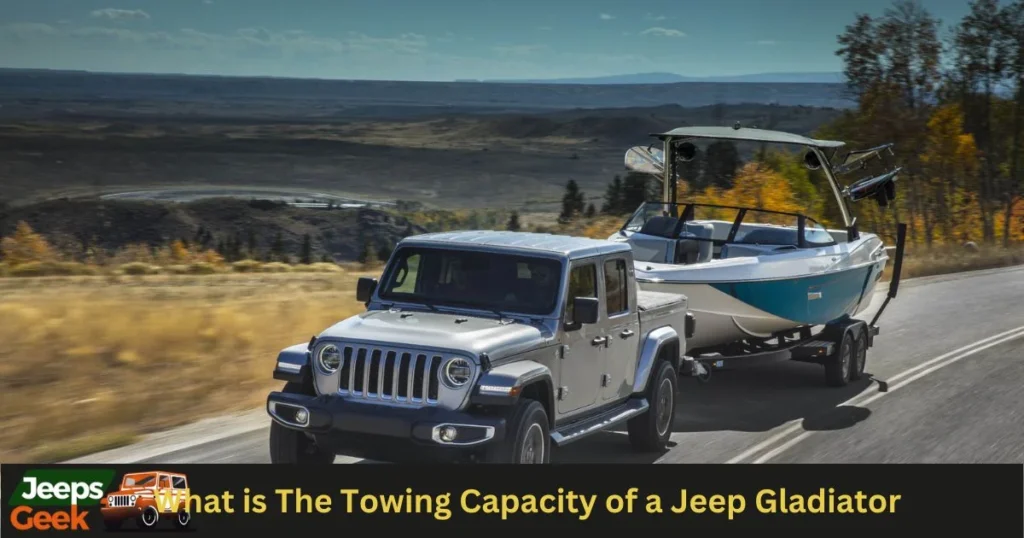
The Jeep Gladiator’s towing capacity has remained consistent across the 2020 to 2022 models. It ranges from a minimum of 4,000 pounds to a maximum of 7,650 pounds.
The towing capacity is influenced by trim levels (Overland, Rubicon, Mojave, Sport & Sport S) and transmission type (manual or automatic).
While specific towing capabilities may vary based on these variations, the overall towing experience is consistent across different Jeep Gladiator models.
What is The Payload Capacity of a Jeep Gladiator?
The Jeep Gladiator’s payload capacity is vital for pickup truck owners, often prioritizing the ability to carry loads in the bed.
Depending on the trim levels (Overland, Rubicon, Mojave, Sport & Sport S) and transmission type (manual or automatic), the Gladiator’s payload capacity ranges from a minimum of 1,700 pounds to a maximum of 1,105 pounds.
This variation allows owners to choose a configuration that aligns with their hauling needs.
Towing Accessories For Jeep Gladiator (Ensuring Safety)
The Jeep Gladiator distinguishes itself with its exceptional design and enhanced towing capabilities supported by a range of included features and accessories. These include an integrated trailer brake controller, hitch view camera, class IV trailer hitch, 4.10 rear axle gear ratio, and wide axles.
Collectively, these accessories contribute to the Gladiator’s reputation for delivering highly reliable, safe, and secure towing performance, setting it apart from other designs in the market.
(2020 – 2022) Jeep Gladiator Towing Capacity Chart
01. 2022 Jeep Gladiator Towing Capacity Chart
| Engine Type | Transmission Type | Maximum Towing Capacity |
| 3.6L Pentastar V6 | Manual | 4,500 pounds |
| 3.6L Pentastar V6 | Automatic | 7,650 pounds |
| 3.0L EcoDiesel V6 | Automatic (Sport & Sport S, Overland, Rubicon) | 6,500 pounds |
The 2022 Jeep Gladiator towing capacity varies based on the engine and transmission types. The 3.6L Pentastar V6 engine offers a maximum towing capacity of 7,650 pounds with an automatic transmission, while the manual transmission provides a towing capacity of 4,500 pounds. More…..
The 3.0L EcoDiesel V6 engine, available with automatic transmission in specific trims, has a towing capacity of 6,500 pounds.
02. 2021 Jeep Gladiator Towing Capacity Chart
| Engine Type | Maximum Towing Capacity |
| V6 Pentastar 3.6L | 7,650 pounds |
| V6 EcoDiesel 3.0L | 6,500 pounds |
The 2021 Jeep Gladiator towing capacity varies based on the engine types. The V6 Pentastar 3.6L engine allows up to 7,650 pounds of towing, while the V6 EcoDiesel 3.0L engine has a maximum towing capacity of 6,500 pounds.
03. 2020 Jeep Gladiator Towing Capacity Chart
| Trim Level | Transmission | Maximum Towing Capacity |
| Sport & Sport S | 6-Speed Manual | 4,000 pounds |
| Sport & Sport S | 8-Speed Automatic | 4,500 pounds |
| Sport & Sport S (Max Tow) | 8-Speed Automatic | 7,650 pounds |
The 2020 Jeep Gladiator towing capacity varies based on the transmission type and trim level. The Sport & Sport S models with different transmissions offer maximum towing capacities of 4,000, 4,500, and 7,650 pounds, depending on the specific configuration.
Benefits of Towing By Jeep Gladiator Over Other Jeep

The Jeep Gladiator distinguishes itself from other Jeeps like the Wrangler with its superior weight and strength, providing an advantage in towing power and efficiency.
When correctly set up and within standard load capacity, the Gladiator ensures straight towing without swaying. Its robust powertrain, responsive braking, and towing accessories provide optimal towing capabilities.
The Gladiator’s impressive engine options, such as the 3.6L V6 and 3.0L EcoDiesel V6, deliver substantial horsepower and torque, with the EcoDiesel boasting exceptional torque at 442 pound-feet.
The adequate wheelbase length enhances stability during towing, prioritizing safety. Even in challenging terrains, the Gladiator maintains economical fuel consumption while towing, further solidifying its reputation as a solid and efficient towing vehicle.
Problems with Towing By Jeep Gladiator
Having the solid-axle front end move aimlessly or drift while driving at speed. However, this problem doesn’t compromise safety or can’t be considered dangerous at any point in time. It could be stressful/tiring if not fixed or corrected.
The corrective measure is to work on the steering to ensure it delivers and sustains a straight and stable course while driving or moving across the highway.
Although the steering performance and handling are somewhat decent (precise and better) while towing across challenging/irregular roads. They could be improved or optimized for better towing performance, especially on the highway or across the city.
The Jeep Wrangler delivers reliable and satisfactory capacity when towing equipment or items across rugged/challenging roads or terrains. Its overall ability can’t be compared to the traditional towing-focused (mid or large-sized) pickup trucks such as the 2019 Ford F-150 and Dodge Ram 3500.
These two vehicles are in a league of their own, offering 13,200 and 18,210 towing capacity, respectively.
The bed is somewhat smaller in comparison to what the traditional towing-focused (mid or large-sized) pickup trucks offer. As a result, it may hinder or restrict the possibility of towing or attaching massive/bigger trailers behind it.
Essential Tips For Towing With Jeep Gladiator (Safety Measures & Engine Protection)
- An inadequate understanding of hitching and unhitching a trailer may compromise safety.
- Extend tire inspection to the trailer to check for proper pressure and signs of cracking.
- Inspect and adjust trailer brakes and check the vehicle’s brake pads for dependability.
- Regular maintenance is crucial due to the extra pressure towing puts on the vehicle.
- Before a towing adventure, check and replace the oil and filter if necessary.
- Maintain the coolant level and inspect and top off the transmission fluid as needed.
- Ensure trailer lights are working, and inspect the wiring for a secure connection to the tow vehicle.
Important Expert Tips
Certainly! After reviewing the article about the Jeep Gladiator’s towing capacity and related information, here are some expert tips:
- Understand Your Needs: Consider your specific towing and hauling needs before selecting a Jeep Gladiator model. Different configurations, such as engine options, gear ratios, and towing packages, can influence towing and payload capacities.
- Towing & Payload Definitions: Clearly understand the terms “towing capacity” and “payload capacity.” Towing capacity refers to the maximum weight a vehicle can pull with a trailer, while payload capacity is the maximum weight the truck bed can carry.
- Consider Trim and Configuration: Towing and payload capacities vary based on trim levels (Overland, Rubicon, Mojave, Sport & Sport S) and transmission types (manual or automatic). Choose a configuration that aligns with your specific hauling needs.
- Towing Accessories: Appreciate the towing accessories and features of the Jeep Gladiator, such as the integrated trailer brake controller, hitch view camera, class IV trailer hitch, 4.10 rear axle gear ratio, and wide axles. These enhance towing performance and safety.
- Engine & Transmission Influence: Recognize the impact of engine and transmission types on towing capacity. For example, the 3.6L Pentastar V6 engine with an automatic transmission offers a higher towing capacity than the same engine with a manual transmission.
- Maintenance Is Key: Regular maintenance is crucial due to the additional pressure towing puts on the vehicle. Prioritize checking and replacing oil and filters, maintaining coolant levels, and inspecting and topping off transmission fluid.
- Address Steering Concerns: Be aware of potential issues with the solid-axle front end drifting while driving. If experienced, consider working on the steering for a straight and stable course, especially at higher speeds.
- Compare with Other Models: While the Jeep Gladiator excels in towing, it may have limitations compared to traditional towing-focused pickup trucks. Consider your towing requirements against the capabilities of other vehicles in the market.
- Safety Measures: Follow safety measures during hitching and unhitching a trailer. Extend tire inspections to the trailer, inspect and adjust trailer brakes, and ensure the vehicle’s brake pads are dependable.
- Stay Informed: Keep yourself updated on the towing capacities and specifications, especially if you plan to purchase a future model like the 2023 Jeep Gladiator.
Always refer to the official Jeep specifications and guidelines for the most accurate and up-to-date information.
Pros and Cons
| Pros | Cons |
| Versatile Towing Capacities (4,000-7,650 lbs) | Potential Steering Issues, especially solid-axle front end drifting at higher speeds |
| Payload Capacities (1,105-1,700 lbs) | Relatively Smaller Bed Size compared to traditional towing-focused trucks |
| Diverse Configurations (Trim, Transmission) | Steering Performance and Handling, especially across challenging or irregular roads |
| Enhanced Towing Accessories | Towing Capacity, while robust, may have limitations compared to traditional towing-focused pickup trucks |
| Reputable Powertrain and Braking | Steering improvements needed for optimal towing performance, especially on highways and in the city |
| Fuel-Efficient Towing in Challenging Terrains | Smaller Bed Size may hinder or restrict towing of massive or bigger trailers behind the Jeep Gladiator |
| Robust Engine Options (3.6L V6, 3.0L EcoDiesel V6) | Limited Comparison to the towing capacity of traditional towing-focused mid or large-sized pickup trucks like Ford F-150 and Dodge Ram 3500 |
| Exceptional Stability with Adequate Wheelbase Length | Steering corrections required for a straight and stable course while driving or moving across the highway |
| Comprehensive Safety Features | |
| Reputation for Reliable Towing Performance |
Note: Always refer to official Jeep specifications for the most accurate and up-to-date information.
People Also Ask For

How much can a 2020 Jeep Gladiator tow?
When properly equipped, the 2020 Jeep Gladiator has a towing capacity of up to 7,650 pounds, making it a robust choice for towing trailers, boats, and other recreational vehicles.
What Jeep Gladiator can tow 7000 lbs?
When properly equipped, the Jeep Gladiator Sport, Overland, and Rubicon models can tow up to 7,000 pounds. These models offer a balance of off-road capability and towing capacity.
What is the towing capacity of the Jeep Gladiator in kg?
The towing capacity of the Jeep Gladiator, when converted to kilograms, is approximately 3,470 kg. This robust towing capability showcases the Gladiator’s strength in handling heavy loads.
What is the towing capacity of a 2023 Jeep Gladiator?
The towing capacity of the 2023 Jeep Gladiator may vary based on the specific trim and equipment. For the most accurate and up-to-date information, refer to the official specifications provided by Jeep for the 2023 model year.
Conclusion
The Jeep Gladiator, introduced in 2019 as a 2020 model, has established itself as a versatile pickup truck with towing capacities ranging from 4,000 to 7,650 pounds and payload capacities from 1,105 to 1,700 pounds. To make informed decisions, buyers should consider their specific needs, including trim levels and transmission types.
The Jeep Gladiator’s towing capabilities, supported by features like an integrated trailer brake controller and hitch view camera, contribute to its reliable and secure towing reputation. While it excels in towing, potential buyers should be aware of steering concerns and the smaller bed size compared to traditional towing-focused trucks.
The Jeep Gladiator stands out for its robust towing capabilities, enhanced by various included features. However, buyers should weigh its strengths against potential steering issues and bed size limitations, ensuring it aligns with their towing requirements.

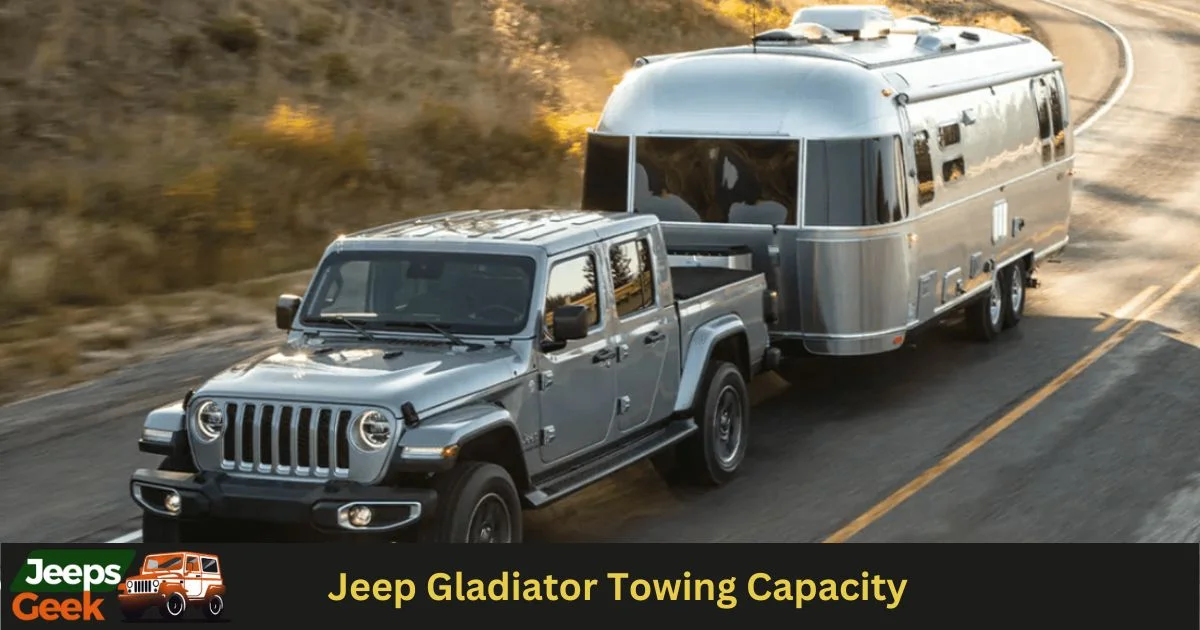
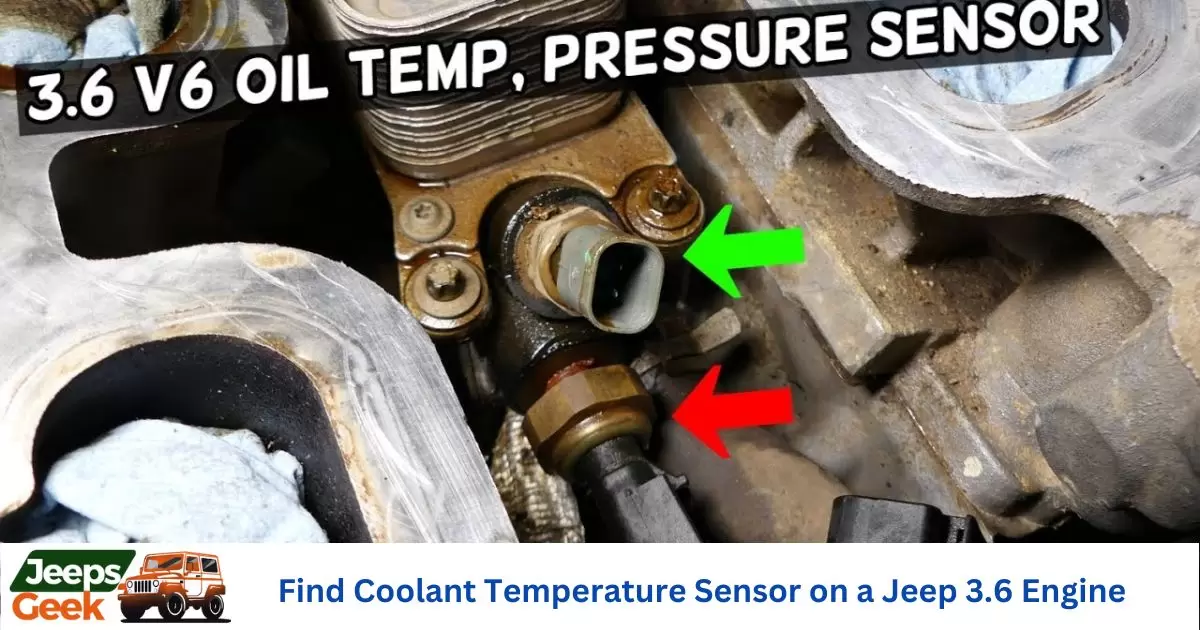
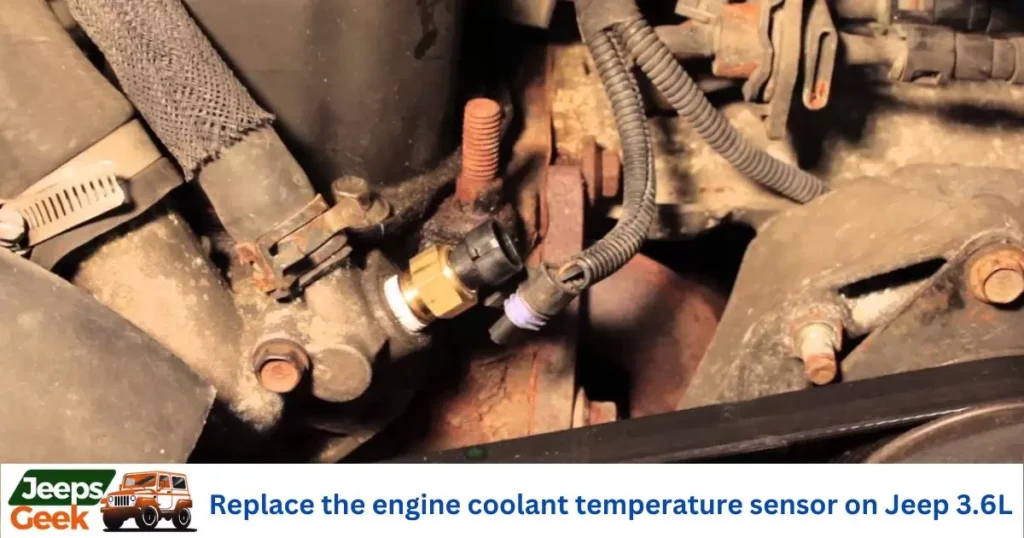
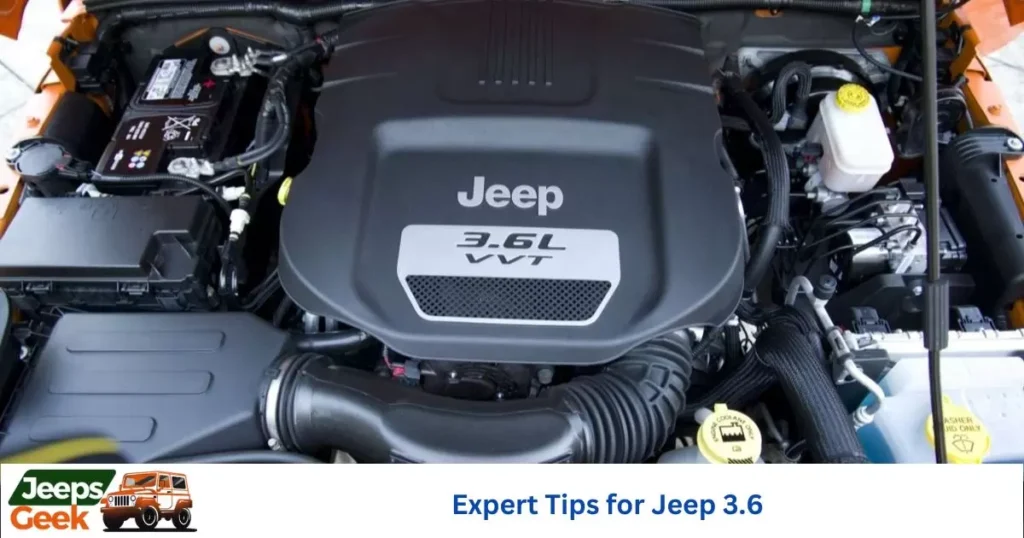
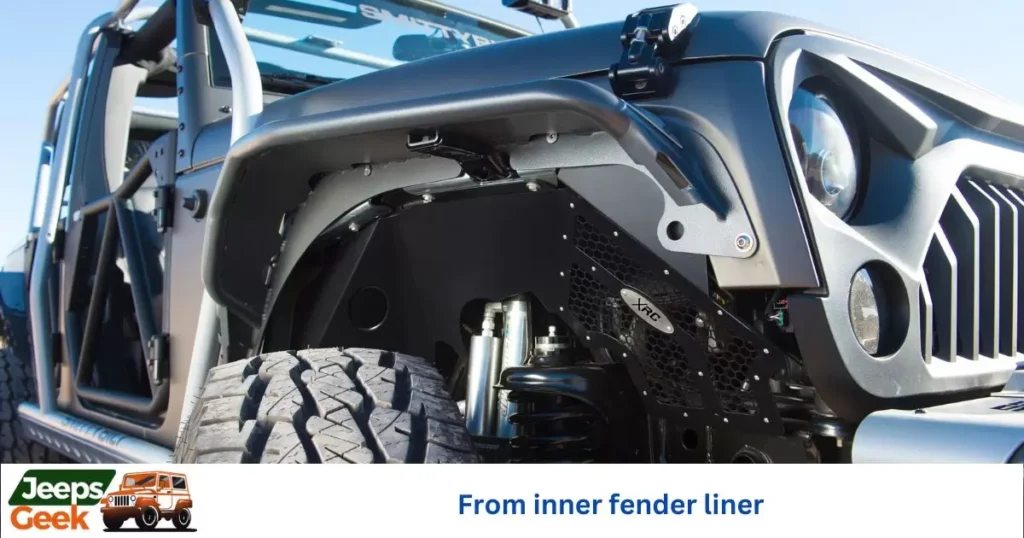
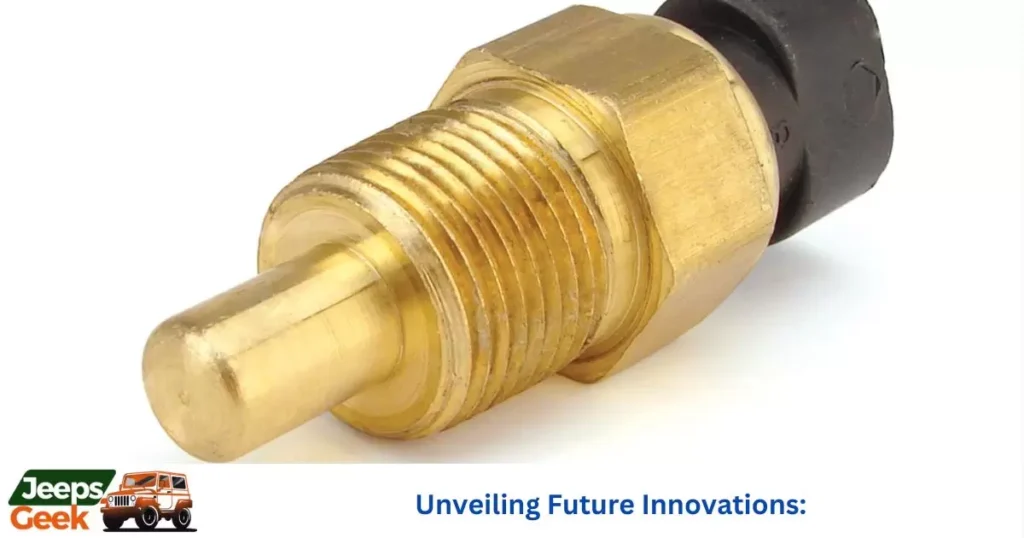
![How to Soften a Jeep Soft Top? [Pro Tips]](https://jeepsgeek.com/wp-content/uploads/2023/12/how-to-soften-a-jeep-soft-top.webp)


